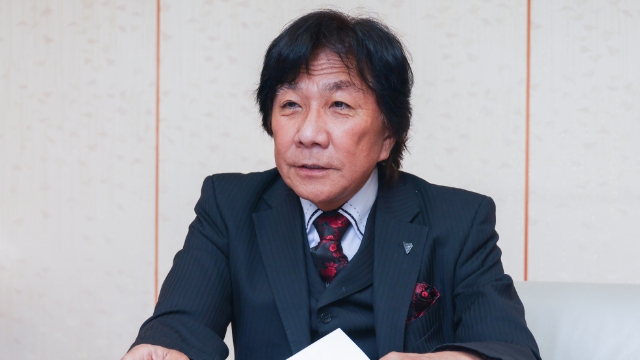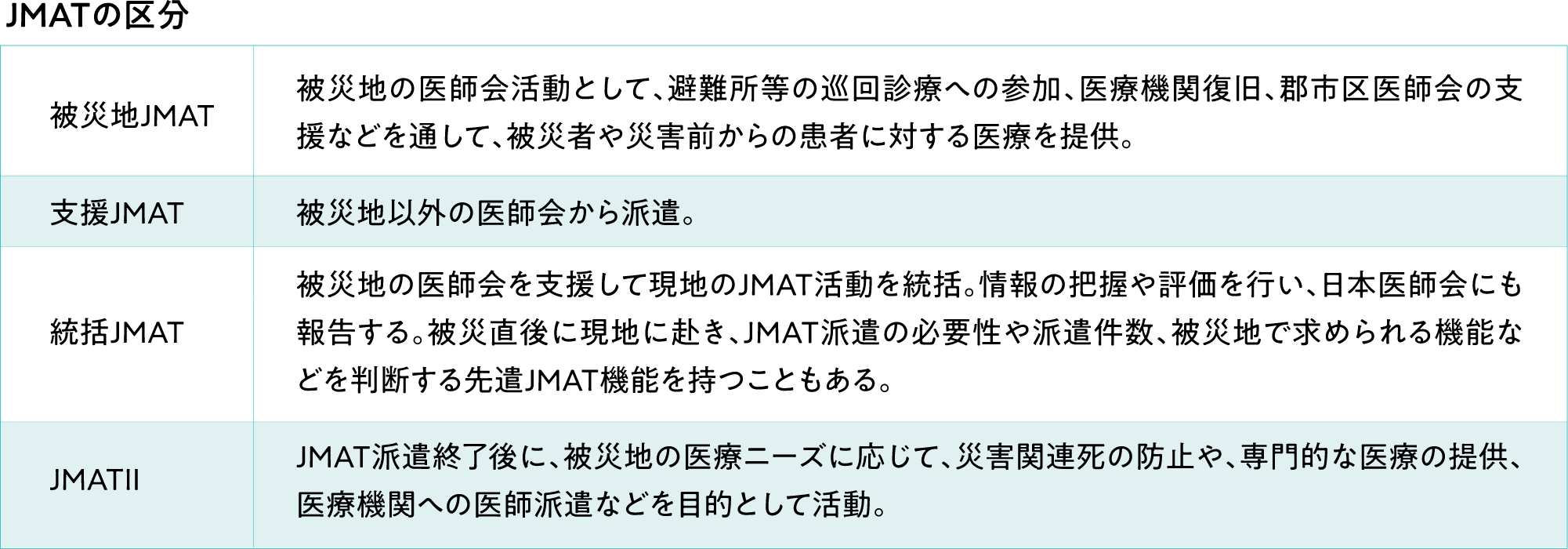
Standing Director of the Japan Medical Association
Honorary Director of Hosokawa Surgical Clinic
Shuichi Hosokawa
After graduating from the School of Medicine at Nagoya Health University (now Fujita Health University) in 1981, he worked as a cardiac surgeon at Nagoya Second Red Cross Hospital, Nagoya University Hospital, Aichi Prefectural Owari Hospital, and Nagoya Medical Center. In 1995, he opened the Hosokawa Surgery Clinic, which accepts emergency patients 24 hours a day, 365 days a year, and also performs autopsies and examinations in disasters and accidents. After serving as the disaster director of the Aichi Prefectural Medical Association for 12 years after the Great Hanshin-Awaji Earthquake in 1995, he became a director of the Aichi Prefectural Medical Association in 2012. As a member of the JMAT and Disaster Mortality Occupational Therapy Team (DMORT), he was active in the Great East Japan Earthquake in 2011, the Kumamoto Earthquake in 2016, the Western Japan Heavy Rain in 2017, and the Izuyama Mudslide Disaster in Atami City, Shizuoka Prefecture in 2021. In 2022, he became a permanent director of the Japan Medical Association, and is in charge of industrial accidents, automobile liability insurance, emergency disaster medical care, environmental health, medical safety, and autopsies.
The Japan Medical Association Disaster Medical Team (JMAT) continues to support the local medical care in Ishikawa Prefecture, which sustained serious damage from the Noto Peninsula earthquake that occurred on New Year's Day this year (at the time of the interview, activities ended on May 31). We spoke to Shuichi Hosokawa, a standing director of the Japan Medical Association, about the JMAT system and this latest support.
The role of the Japan Medical Association Disaster Medical Team (JMAT) is to support the medical care and health management of disaster victims, public health, medical associations and administrations in the affected areas, and, where possible, autopsies and examinations. In addition, the team collects and understands local information, contacts prefectural medical associations from which JMAT members are dispatched, and provides other support tailored to the needs of the affected areas. JMAT promotes "participation based on professional autonomy," in which doctors from all over the country participate with high ethics and a strong sense of mission, regardless of whether they are members of the Japan Medical Association or have pre-registered.
The types of JMAT are as shown in the table. Each team consists of four people: one doctor, two nurses, and one logistics person in charge of administrative and business coordination. Depending on the local situation, dentists, pharmacists, physical therapists, occupational therapists, clinical laboratory technicians, diagnostic radiologists, and registered dietitians may also join.

In the acute phase of a disaster, the Disaster Medical Assistance Team (DMAT) under the jurisdiction of the Ministry of Health, Labor and Welfare will be the first to enter the affected area. JMAT, which has many doctors who are accustomed to daily medical practice rooted in the local community, will travel to the affected area and work from about the third day after the disaster, during the transition period from the acute phase to the chronic phase, in response to changes in medical needs. In the affected area, JMAT is responsible for night and holiday medical care and medical care in specific medical departments, and also plays a role in rebuilding local medical care by directing patients to local medical institutions as much as possible during the daytime on weekdays.
In affected areas, we will work in cooperation with the Health, Medical and Welfare Coordination Headquarters established in each prefecture, the DMAT, the Disaster Psychiatric Assistance Team (DPAT), which provides support for psychiatric medical care and mental health activities (a project commissioned by the Ministry of Health, Labour and Welfare to the Japan Psychiatric Hospital Association, a public interest incorporated association), the Japanese Red Cross Society, and the Disaster Infection Control Team, among others.
In addition, the Japan Medical Association and each prefectural medical association provide JMAT training to further enhance disaster preparedness and cooperation with each local medical association. Although it is not necessary to take this training in order to work as a JMAT, more than 1,500 people have already completed the training.
Following the Noto Peninsula earthquake that occurred on January 1st of this year, a request was made to each prefecture on January 5th to send support JMATs, and JMATs were dispatched from all prefectural medical associations. By April 15th, a cumulative total of 3,627 teams and 11,944 people had been dispatched per day.
The recent earthquake disaster is characterized by the fact that it takes time to restore infrastructure, especially roads, water, electricity, gas, and communications, making it difficult to provide support. In elderly care facilities, air mattresses can no longer be used due to power outages, nurses and caregivers are also in short supply due to the disaster, and many patients who cannot move have bedsores, so JMAT has added a bedsore treatment specialist. We are also providing support to help affected medical institutions resume medical care. In the northern Noto region, some clinics are still closed. I have heard that the four public hospitals have only about 30% of their inpatient capacity as of the end of April.
I have personally been to disaster-stricken areas many times, and I have realized that the damage caused by disasters varies greatly depending on the type of disaster and the region. This has reminded me that the Japan Medical Association, as well as prefectural medical associations, must be thoroughly prepared for a variety of disasters in peacetime.
During the Noto Peninsula earthquake, it was particularly difficult to confirm residents' evacuation locations, travelers' names and evacuation status, and their health conditions. So, although we were unable to create medical records, we handed out notes in different colors according to the severity of the illness to victims, who were then shown to the next medical professional who came. More ingenuity is needed to create a system for sharing information that respects privacy. If the use of My Number cards as health insurance cards becomes widespread and everyone carries their My Number cards with them at all times, I think it will be useful in the event of a disaster.
The Ministry of Health, Labor and Welfare is planning to improve the functionality and operability of the Wide-area Disaster Emergency Medical Information System (EMIS), which allows the sharing of information related to medical care and relief, such as the operational status of medical institutions during disasters. It is hoped that this will lead to greater cooperation between local governments, DMATs, JMATs, and other organizations.
Japan Medical Association Official YouTube Channel
[Long version] Activities of the Japan Medical Association Disaster Medical Team during the Noto Peninsula Earthquake
https://www.youtube.com/watch?v=w6LzTvMjmRs
[Short story] Activities of the Japan Medical Association Disaster Medical Team during the Noto Peninsula earthquake
https://www.youtube.com/watch?v=cR_6Q0N69lQ